Excessive sweating beyond normal is called Hyperhidrosis. There are two types of sweating: the apocrine and the eccrine glands, and it is the latter involved in hyperhidrosis. It occurs most commonly on the palms, axillae, face, and soles of the feet. Up to 0.5% of the population is affected.
It can be distressing for many patients and even disabling for some. In the underarms it is associated with an offensive odour. In the palms it causes embarrassment during handshakes, and can interfere with normal activities like opening the door or grabbing papers.
The cause of hyperhidrosis is unknown, but is probably due to a malfunction of part of the brain called hypothalamus, which is responsible for sweating regulation.
Other treatment options include topical anti-perspirant containing aluminum chloride salts, oral anti-cholinergic drugs, tap water iontophoresis, and surgery.
There are more details on this topic under Medical Skin Problems > Common Skin Problems > Hyperhidrosis.
As mentioned above, Botox / Dysport interrupts the transmission of Acetylcholine from the nerve endings onto the sweat glands. Botox / Dysport has been used since the mid 1990s, and is most frequently used for the palm and axillae.
Botox / Dysport is injected into the skin at multiple sites. The effect is rather obvious after only 2 days and comes to a peak after 5 days on average. The sweating is reduced by an average of 83% after 1 week. The duration of this effect will last between 6 to 12 months and patients reported an improvement in quality of life. However, the effect may very with individual. Doctors will adjust the doses and injection sites to obtain the optimal result.
Some patients find the injections painful and some experience small bruising. For injections into the palms, weakness of the hand muscles is possible but is uncommon.
The administration is a straight forward procedure:
Prior to the treatment, you should shave the underarms, abstain from use of over-the-counter deodorants or antiperspirants for 24 hours, and should be resting comfortably without exercise, hot drinks, etc for approximately 30 minutes.
| Affected axilla is dried and then painted with iodine solution. | 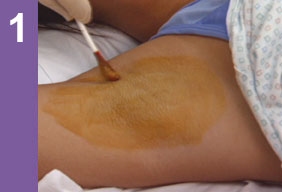 |
| The area is brushed with starch powder. 10 minutes later a blue-black mark will identify the affected area. This is the Iodine Starch Test. | 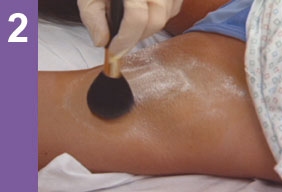 |
| The affected area is circled with a surgical marker and cleaned with alcohol. | 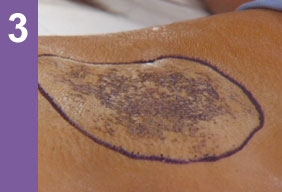 |
| Injection points 1.5 to 2 cm apart are marked using a surgical pen. |  |
| Recommended dosage of Botox or Dysport is allocated per injection. | 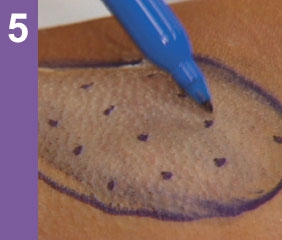 |
| Injections are made to a depth of approximately 2 mm. After injection, the treated area is cleaned with alcohol. | 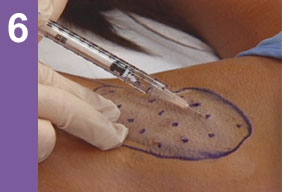 |

